CANCER
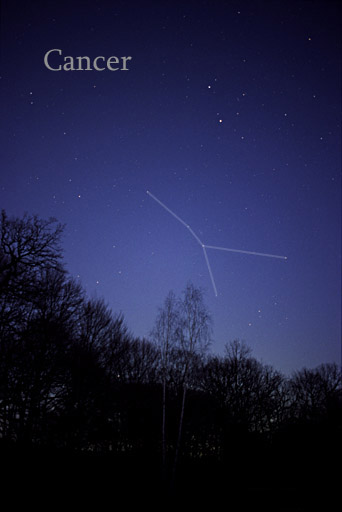
Till Credner - Own work, AlltheSky, CC BY-SA 3.0, wikimedia
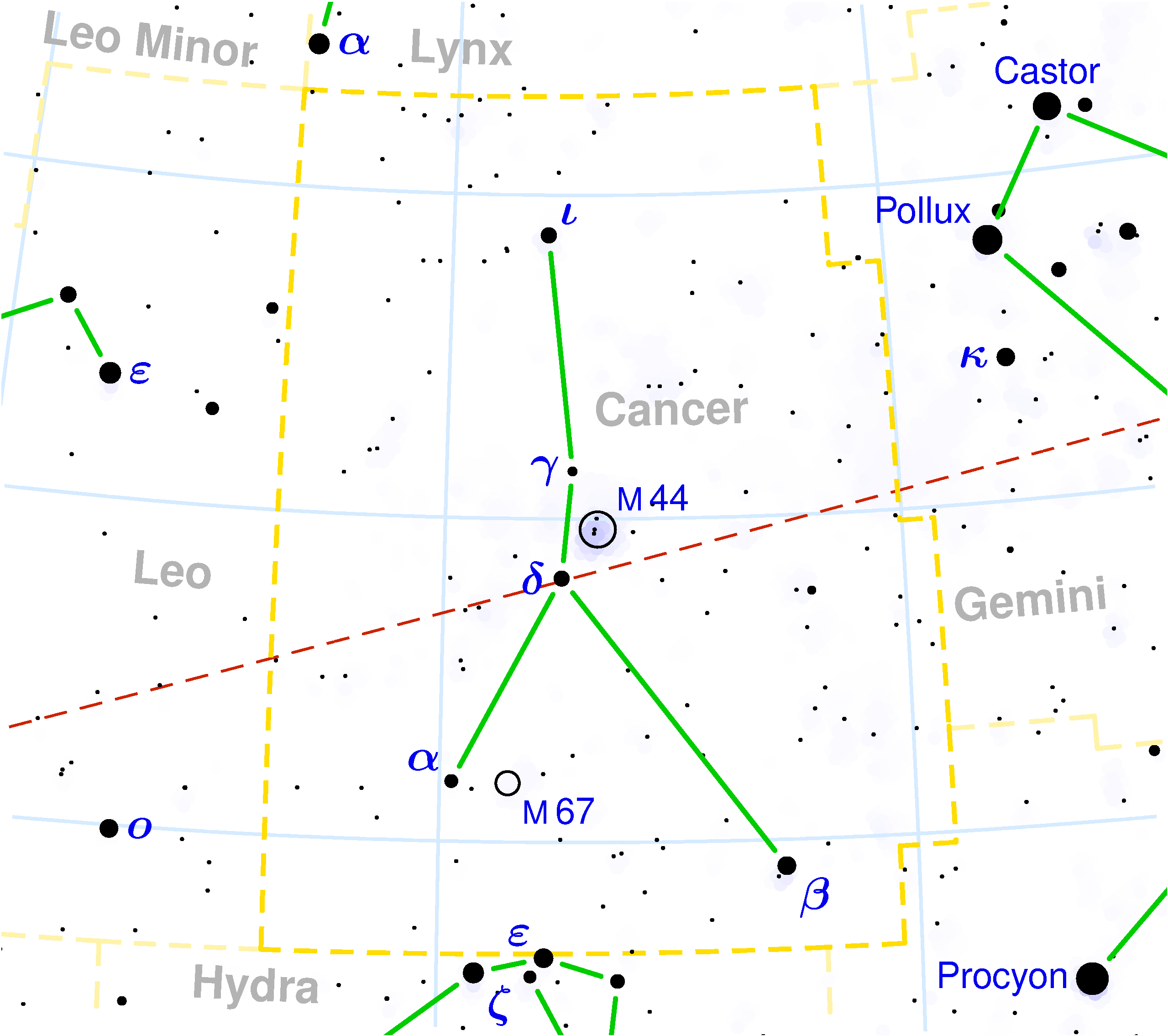
CC BY-SA 3.0, wikimedia
Although Cancer is the faintest constellation of the zodiac, it is fairly easy to find thanks to its position next to the more prominent Leo and Gemini constellations which stand out even in a partially dark sky.
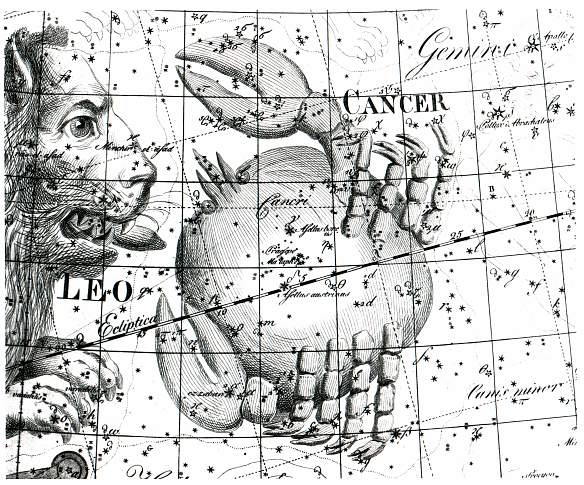
Alessio Govi - Uranographia, Johann Bode,
Public domain, wikimedia
Cancer or the Crab was a minor protagonist in the epic story of Hercules in Greek mythology. During the battle with the seven-headed monster, Hydra, the crustacean tried to bite Hercules on the foot. The Crab was subsequently crushed by the hero and flung up into the skies by Hera herself.
Asellus Australis is the second brightest star in the constellation and is the heart of Cancer. It is just south of the cluster M44. It is a double star 180 light-years from us. As it is near the ecliptic, it can be hidden by the Moon and planets.
Acubens is the Alpha star but it is only the fourth brightest star. Its name comes from Arabic and means ‘the claw’. It is 174 light-years from Earth. It has a companion and is 23 times brighter than the Sun.
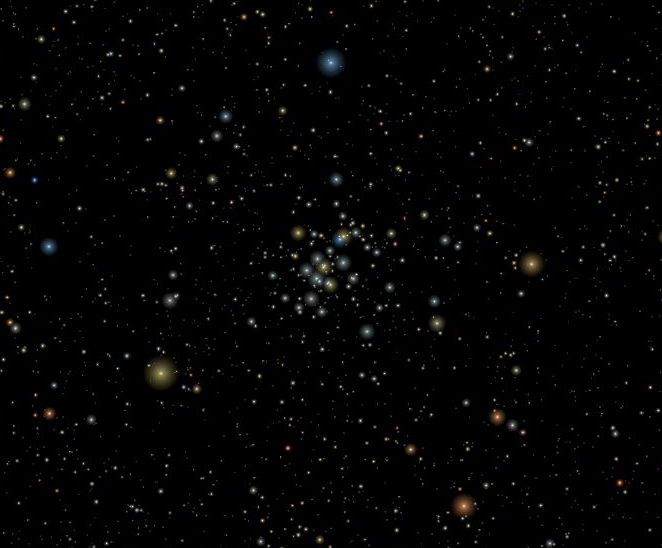
Roberto Mura - Own work,
Public domain, wikimedia
The most interesting object in the Cancer constellation is an open cluster M44, Praesepe, which can be seen with the naked eye and resembles a small nebula. Less than 600 light-years away, it is one of the closest clusters to the Earth. Galileo chose it as his first object of observation through his telescope. It must contain a thousand stars, most of which are red dwarfs.
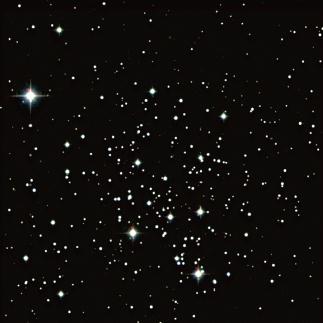
Public domain, wikimedia
Another object to consider is M67, an open cluster which is, however, a little less than 3,000 light-years from us. It contains about 500 stars of which 100 are similar to our Sun. It is beautiful when seen through a telescope.
Southern Hemisphere: Cancer can be seen at the same time of the year as in the Northern hemisphere. At the southern middle latitudes, around February right after sunset you will find it towards the north between the zenith and the horizon.